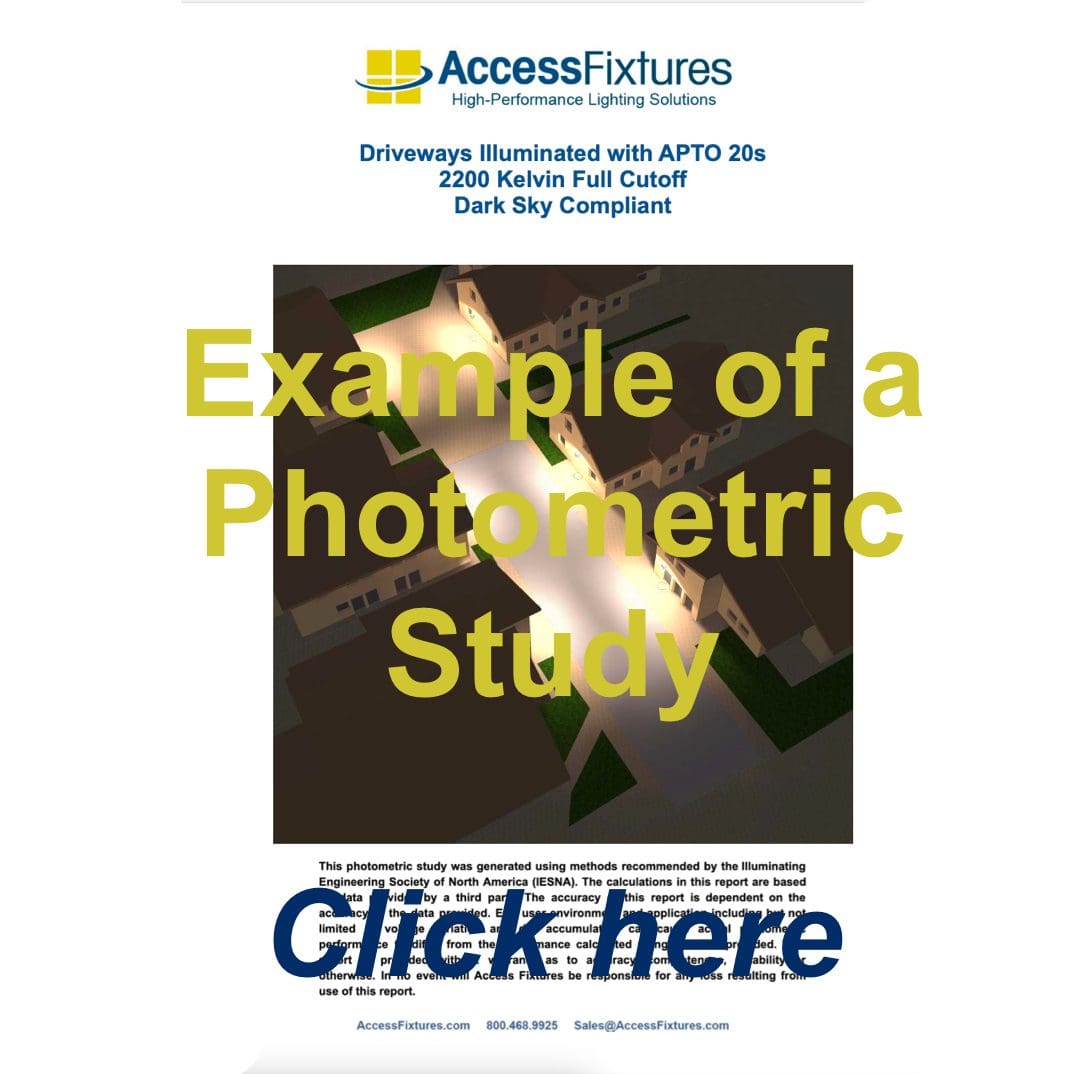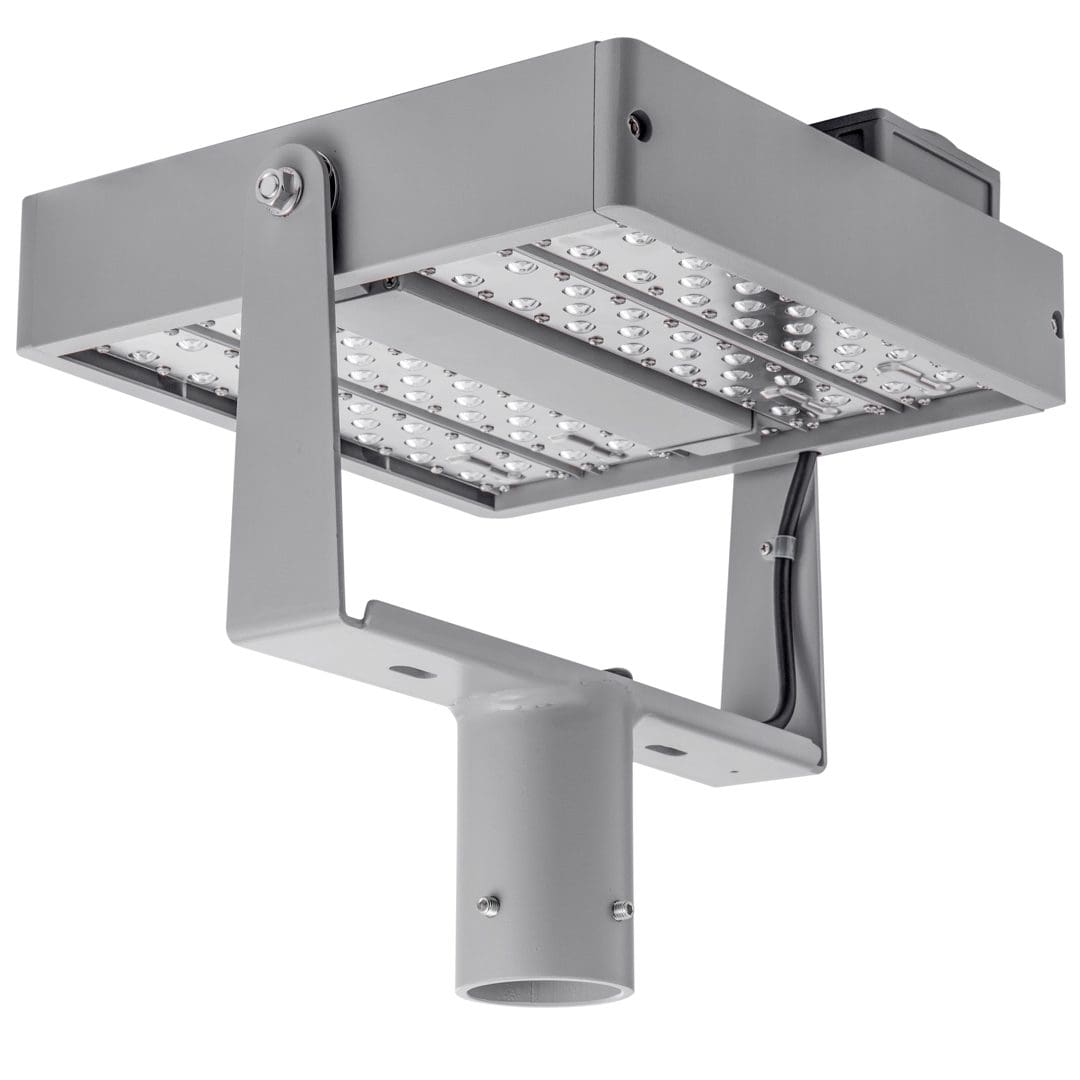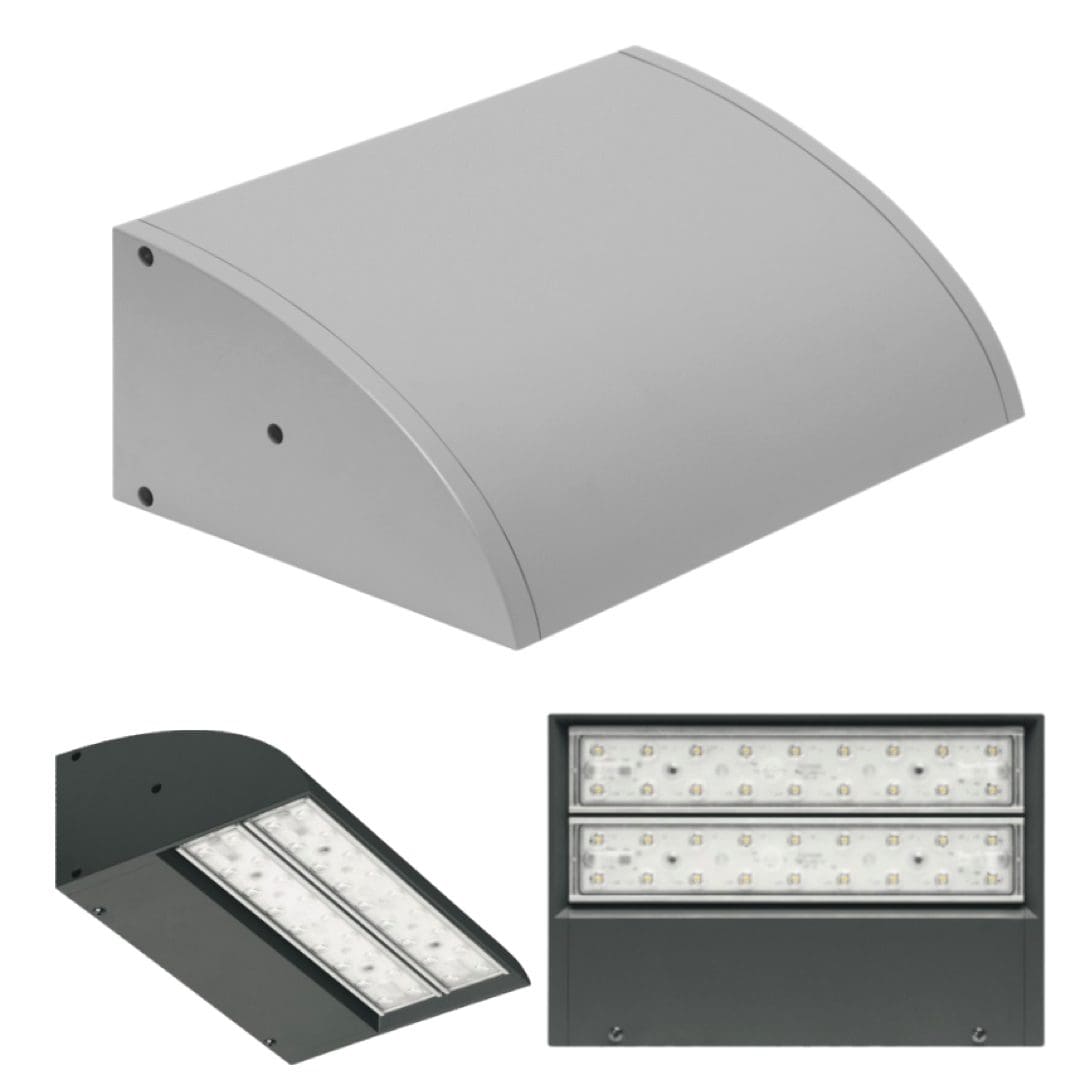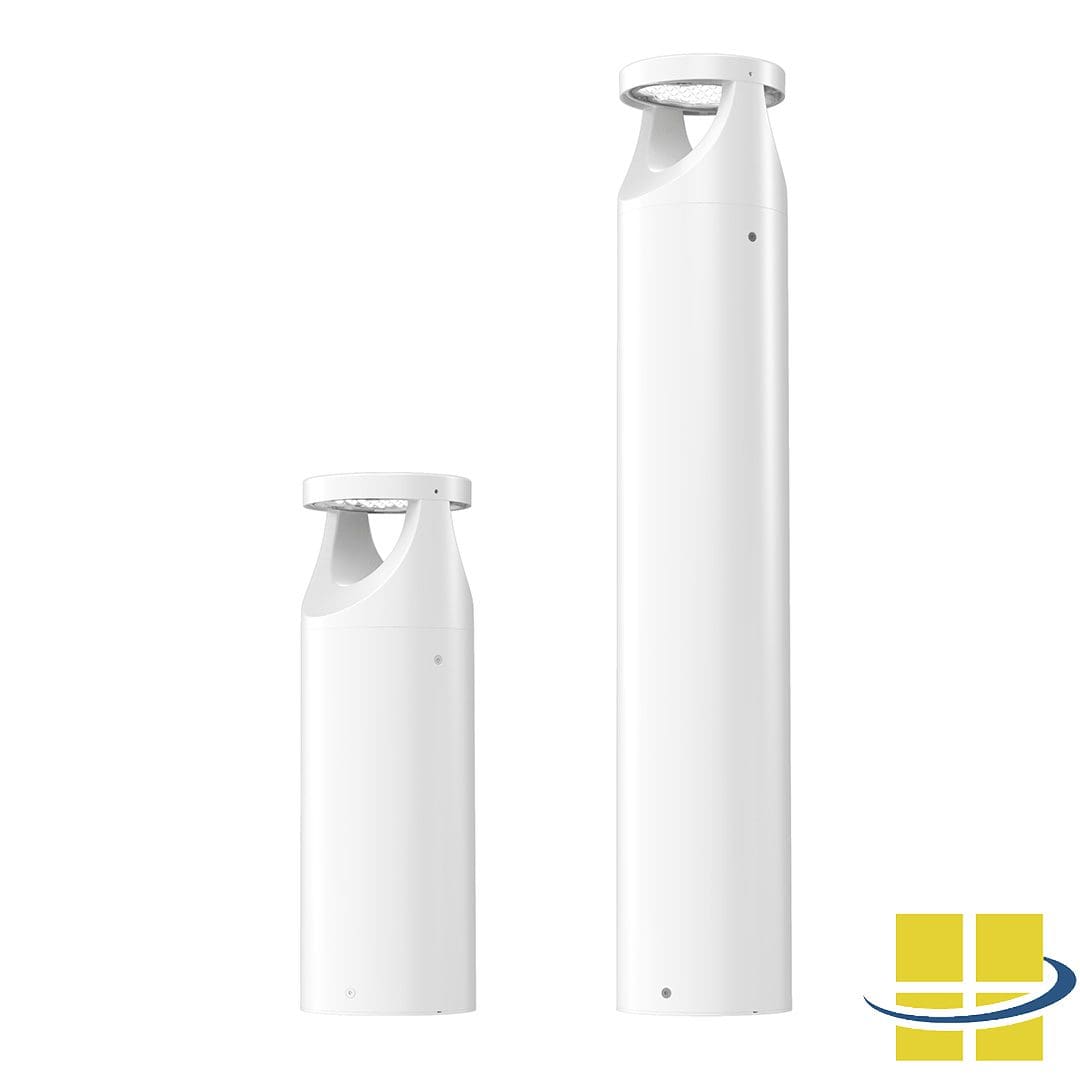Understanding BUG Rating
When dealing with dark sky ordinances, or just to protect the environment and night sky visibility, a crucial factor to consider is BUG Rating. The Illuminating Engineering Society (IES) and DarkSky developed BUG Ratings to classify outdoor light fixtures with the objective of minimizing light pollution. To understand BUG Ratings and to know how they are used in an outdoor lighting project, we first need to know what a Lighting Zone is and then what the BUG in BUG ratings stands for.
Lighting Zones (LZ) are classifications that determine how much light as well as how much up-light, backlight, and glare are acceptable in a location. Each LZ has a list of acceptable BUG ratings.
BUG Ratings report the backlight (B), up light (U), and Glare (G) for an outdoor light fixture. For an outdoor light fixture to be permitted or appropriate in a lighting zone, the BUG Rating must be below specified parameters.
What are Lighting Zones and Why Do Lighting Zones Matter?
A Lighting Zone is usually specified by regulation and if not regulated, may be determined by preference. LZs define the purpose or function of a location using letters and numbers of LZ-0 through LZ-4. Each LZ has a listed maximum backlight, up light, and glare rating. To determine if a light fixture is qualified to be in a given LZ, determine the LZ number. Then check if the light fixture’s BUG rating is less than the maximum allowable backlight, up light, and glare for the LZ. Remember that BUG may only be one part of the regulations for the LZ.
List and Description of the 5 Lighting Zones
- Lighting Zone 0 should be applied to areas in which permanent lighting is not expected and when used, is limited in the amount of lighting and the period of operation. LZ-0 typically includes undeveloped areas of open space, wilderness parks, and preserves, areas near astronomical observatories, or any other area where the protection of a dark environment is critical. A special review should be required for any permanent lighting in this zone. Some rural communities may choose to adopt LZ-0 for residential areas.
- Lighting Zone 1 pertains to areas that desire low ambient lighting levels. These typically include single and two-family residential communities, rural town centers, business parks, and other commercial or industrial/ storage areas typically with limited nighttime activity. May also include the developed areas in parks and other natural settings.
- Lighting Zone 2 pertains to areas with moderate ambient lighting levels. These typically include multifamily residential uses, institutional residential uses, schools, churches, hospitals, hotels/motels, commercial and/or businesses areas with evening activities embedded in predominately residential areas, neighborhood-serving recreational and playing fields, and/or mixed-use development with a predominance of residential uses. Can be used to accommodate a district of outdoor sales or industry in an area otherwise zoned LZ-1.
- Lighting Zone 3 pertains to areas with moderately high lighting levels. These typically include commercial corridors, high-intensity suburban commercial areas, town centers, mixed-use areas, industrial uses and shipping and rail yards with high nighttime activity, high-use recreational and playing fields, regional shopping malls, car dealerships, gas stations, and other nighttime active exterior retail areas.
- Lighting Zone 4 pertains to areas with very high ambient lighting levels. LZ-4 should only be used for special cases and is not appropriate for most cities. LZ-4 may be used for extremely unusual installations such as high-density entertainment districts, and heavy industrial uses.
An Overview of BUG Rating
BUG ratings enable people to make an informed decision about how appropriate a light fixture is for various outdoor applications and locations. Using light fixtures with lower BUG ratings reduces unnecessary light pollution and promotes a more sustainable approach to outdoor lighting.
When planning an outdoor lighting project, understanding BUG ratings can help ensure compliance with local regulations and minimize light pollution.
What is BUG Rating?
BUG Rating, also known as Backlight-Uplight-Glare Rating, is a system that evaluates and specifies the optical performance of outdoor light fixtures. Developed by the Illuminating Engineering Society (IES), the BUG rating assesses the impact of a luminaire’s backlight, uplight, and glare characteristics on its overall performance and efficiency.
BUG ratings focus on 3 main components:
- Backlight (B): This rating is related to the amount of light escaping from the luminaire in the rearward direction.
- Uplight (U): This rating deals with how much light is emitted in the upward direction from the luminaire, which may contribute to light pollution.
- Glare (G): This rating considers the amount of visual discomfort caused by glare from the luminaire to an observer in different positions.
The purpose of the BUG rating system is to ensure that lighting fixtures meet the necessary requirements for proper illumination and energy efficiency while considering their environmental impact.
The BUG rating system is used to achieve the following objectives:
- Minimize light pollution by minimizing uplight and glare from exterior lighting systems.
- Evaluate and compare different luminaires before installation to ensure that you meet local, state, and possibly national lighting guidelines and regulations.
- Improve the overall efficiency and performance of your lighting systems by choosing luminaires that have better optical control and lower energy consumption.
Understanding and utilizing the BUG rating system is essential for making informed decisions about lighting projects. It ensures that the project meets the necessary guidelines and requirements for energy efficiency, visual comfort, and environmental sustainability.
BUG Rating Components
We now know that BUG Ratings report the backlight (B), up light (U), and Glare (G) for an outdoor light fixture, but why are these measured and reported? Why is every BUG Rating component relevant?
Backlight
Backlight is an important aspect of lighting design that influences the visual comfort in your environment. It occurs when light is emitted in the opposite direction of its intended purpose, causing unwanted brightness behind the luminaire. To control backlight, focus on selecting and positioning your luminaires wisely. Consider using fixtures with a low BUG rating for backlight to reduce the possibility of discomfort, light pollution, and trespass in your space.
Up Light
Uplight is the portion of light emitted upward from a luminaire, which can contribute to skyglow and affect both aesthetics and the environment. To manage uplight effectively, select lighting fixtures with a low BUG rating for uplight. This will not only help maintain a dark sky and reduce the ecological impact but also enhance the visual appeal of your space. Utilizing fixtures with proper shielding and aiming them strategically can further minimize uplight.
Glare
Glare can be a significant source of discomfort and distraction in a lit environment, as it reduces visibility and strains your eyes. It occurs when excessive light is emitted directly into your field of view. To control glare, ensure that your luminaires have a low BUG rating for glare, and utilize appropriate shielding and optical control mechanisms. Implementing proper lighting design techniques can also assist in managing glare effectively without compromising on the overall illumination of your space.
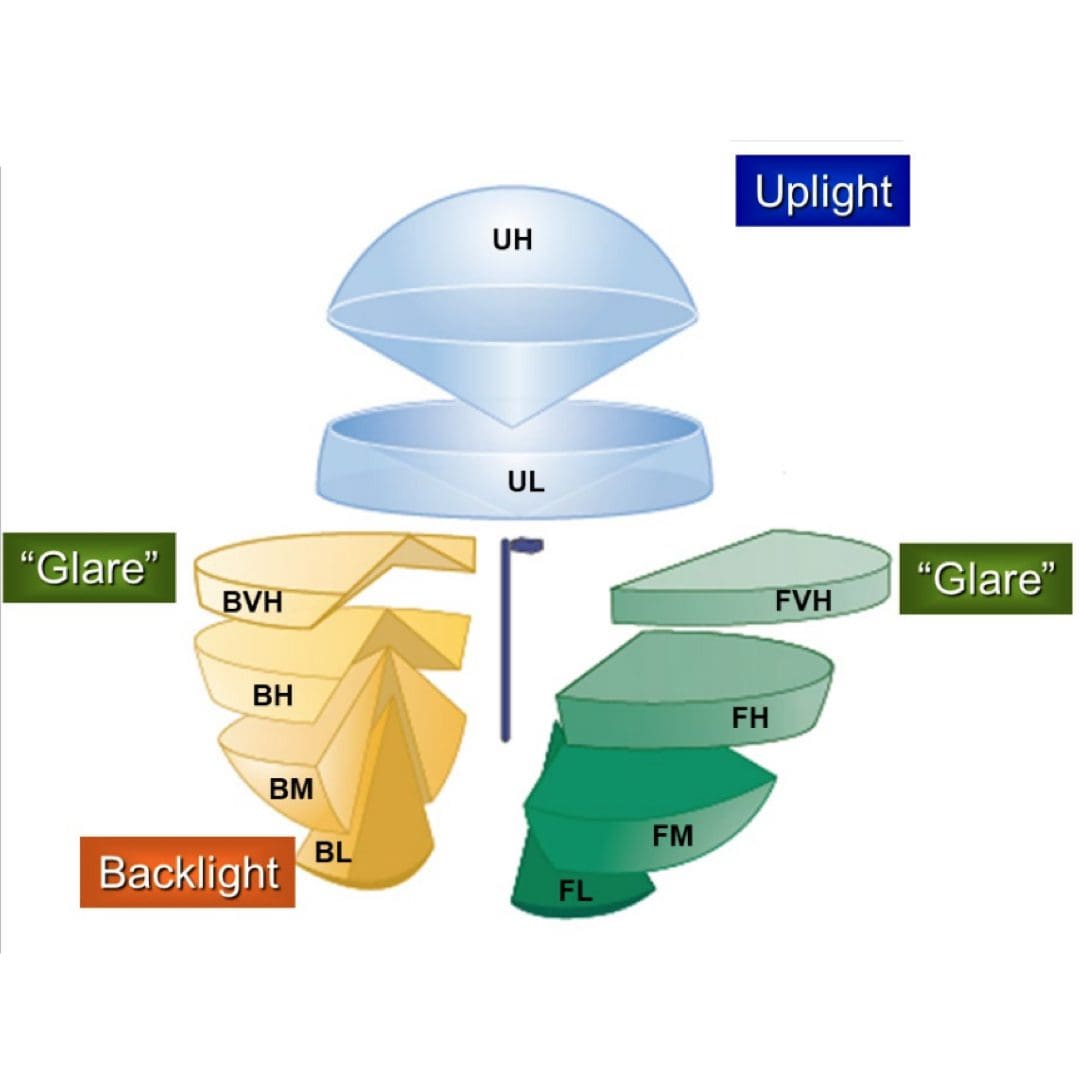
BUG Ratings are a measurement of backlight (B), up light (U), and glare (G)
BUG Ratings Aren’t the Only Factor Used to Protect Against Light Pollution
While BUG Ratings report backlight, up light, and glare, BUG is not the only relevant factor when qualifying a light for dark sky compliance. Lumen output, Kelvin, Footcandles, and Max/Min Ratio are also important and taken into consideration.
Lumen Output
Lumen output is the total amount of light emitted by a light fixture. Excess light or unneeded light wastes energy and defeats dark sky initiatives. To limit the amount of light emitted in a given location, some communities limit the lumen output per acre.
Kelvin
Most ordinances that regulate lighting to promote dark skies and limit light pollution specify the Kelvin of the light fixture. The most frequent regulation is that the Kelvin must be 3000K or below. 2200K is preferred as it is more effective. Other objectives such as protecting wildlife, sea turtle hatchlings, or maintaining dark skies for observatories may specify narrow bandwidth of 590nm Amber.
Footcandles
Footcandles (fc) measure the amount of light on a surface. For outdoor lighting, this is usually the ground such as a walkway, driveway, or parking lot. Local regulations that protect dark skies are starting to limit the maximum footcandles on a site to 5fc.
Max/Min Ratio
A Max/Min Ratio measures the maximum number of footcandles in an area divided by the minimum number of footcandles in an area. For general egress and parking, IESNA recommends a Max/Min Ratio of 10. Now, a Max/Min ratio of 5 is starting to gain traction. A lower Max/Min ratio increases visibility while reducing hot spots or areas with an overabundance of light.
Creating a Lighting Plan
BUG ratings are an important part of planning an outdoor lighting design and will play into different elements of design, but BUG Ratings are not the only consideration. These are some of the factors involved in creating a lighting plan. When undertaking an outdoor lighting project, considering BUG ratings along with other factors ensures a well-rounded and compliant design.
Lighting Quality and Aesthetics
When planning your outdoor lighting, prioritize lighting quality and aesthetics. The illumination levels need to be adequate. The fixtures selected need to complement the architectural design of the space. Consider the color temperature of the light emitted to achieve the desired ambiance. Naturally, pay attention to the BUG Rating of the light fixtures to minimize glare and light pollution.
Light Fixture Locations
Carefully analyze your location and the area that needs illumination to determine the most effective locations for your light fixtures. Consider the following factors when deciding on luminaire positions:
- The function of the space
- Task requirements and specific areas that need focused lighting
- Ambient lighting levels
- Potential obstructions or shadows
- Mounting height
- Proximity to property lines
Moving or adjusting luminaire locations as needed can improve the overall lighting plan and avoid unnecessary costs or rework.
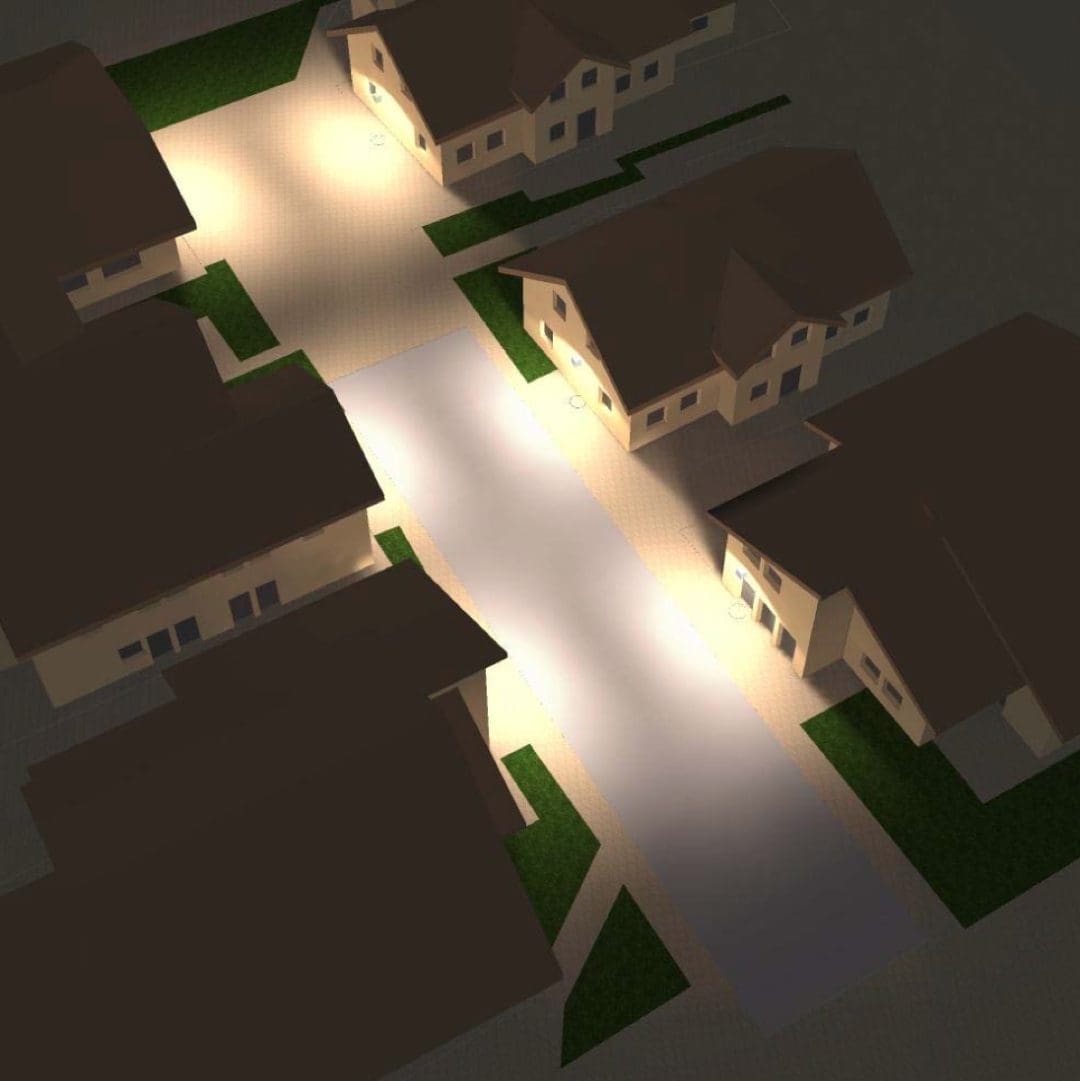
Understanding BUG Ratings is a first step to superior lighting
BUG Ratings, Professional Design Services, and Photometric Studies
BUG ratings, lighting zones, max/mins, and light trespass are a lot to deal with. There are alternatives to doing it yourself.
For any outdoor lighting project, consulting with professionals ensures that all aspects, including BUG ratings, are properly addressed.
BUG Ratings and Lighting Professionals
If you are undertaking a project that requires outdoor lighting it is essential that you have a basic understanding of BUG ratings, lighting zones, Kelvin, nanometers, and other aspects of lighting. In the end, if your project needs approval from a governing body you will need to involve a lighting professional. Lighting design includes aesthetics, energy use, and compliance with local regulations and codes. That can seem rather complicated because it is.
That is why Access Fixtures has lighting specialists and lighting engineers who do lighting design. Access Fixtures lighting specialists, with the assistance of a lighting engineer, work with architects, site engineers, property managers, and other clients to determine the best initial layout that looks great, meets functional requirements and meets local ordinances and codes. Then an Access Fixtures lighting engineer runs a photometric study to model the light emitted by the proposed lighting design. If modifications are required, modifications are made, as it is much easier to change a design than change an installation.
Results are delivered in multiple pdf formats and in a dwg file. That makes permitting and approvals faster and easier. If you are working on a lighting project that will require approvals and/or permits, take the next step. To learn more about photometric studies call an Access Fixtures lighting specialist at 800.468.9925, or contact an Access Fixtures lighting specialist via the link below.
BUG Rating Frequently Asked Questions
You have BUG Rating questions. We have BUG Rating answers. If your question isn’t answered on this page or below, click the I have a Question link below and ask an Access Fixtures lighting specialist your question.
How are BUG ratings calculated?
BUG ratings are calculated using three components: backlight (B), uplight (U), and glare (G). Each component is evaluated separately, and then these values are combined to form the overall BUG rating. This system helps you to assess the impact of a luminaire on the surrounding environment, considering factors like light pollution and visual discomfort.
Does LEED Certification take into consideration BUG ratings?
BUG ratings are used as a tool to comply with the requirements for LEED (Leadership in Energy and Environmental Design) certification, related to exterior lighting. By adhering to specific BUG rating thresholds, you can ensure that your project promotes sustainable lighting practices and minimizes light pollution, contributing positively to your LEED score.
BUG rating method meaning?
The BUG rating method is a systematic approach for evaluating the performance of outdoor lighting fixtures. By assigning values to the components of backlight, uplight, and glare, the method offers a comprehensive understanding of how a fixture potentially impacts the environment. This allows you to make informed decisions when designing or retrofitting outdoor lighting systems.
What is DarkSky’s role in BUG ratings?
DarkSky, formerly known as the International Dark-Sky Association (IDA), plays a crucial role in advocating for responsible lighting practices to minimize light pollution. DarkSky does not directly administer the BUG rating system. They make recommendations including partnering with the Illuminating Engineering Society (IES) to create a model lighting ordinance that promotes dark sky best practices. DarkSky guidelines and recommendations use BUG ratings and promote light fixtures with minimal negative effects on the environment, night sky, and human health.
What is the impact of BUG ratings on lighting?
BUG ratings impact lighting by encouraging the use of fixtures that minimize negative environmental and visual effects. By adhering to recommended BUG rating values in a lighting zone, you can design lighting systems that effectively illuminate intended areas without excessive light pollution, glare, or stray light. This results in more efficient, sustainable, and comfortable outdoor lighting.
What is the relationship between BUG and the Model Lighting Ordinance?
The Model Lighting Ordinance (MLO) is a set of guidelines developed jointly by DarkSky and the Illuminating Engineering Society (IES) to help municipalities regulate outdoor lighting. The MLO relies on BUG rating system as one of the key criteria for evaluating the appropriateness of outdoor lighting fixtures. By incorporating BUG ratings into their requirements, MLO guidelines promote responsible lighting practices that minimize light pollution in local communities.



